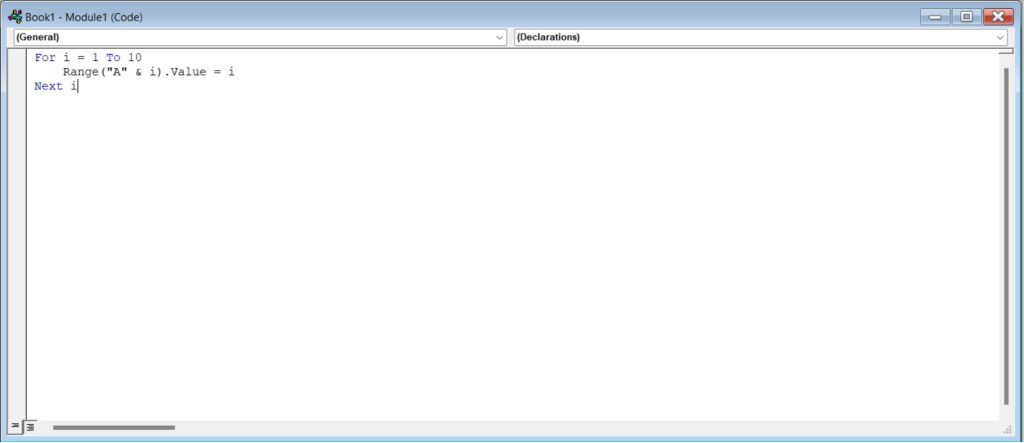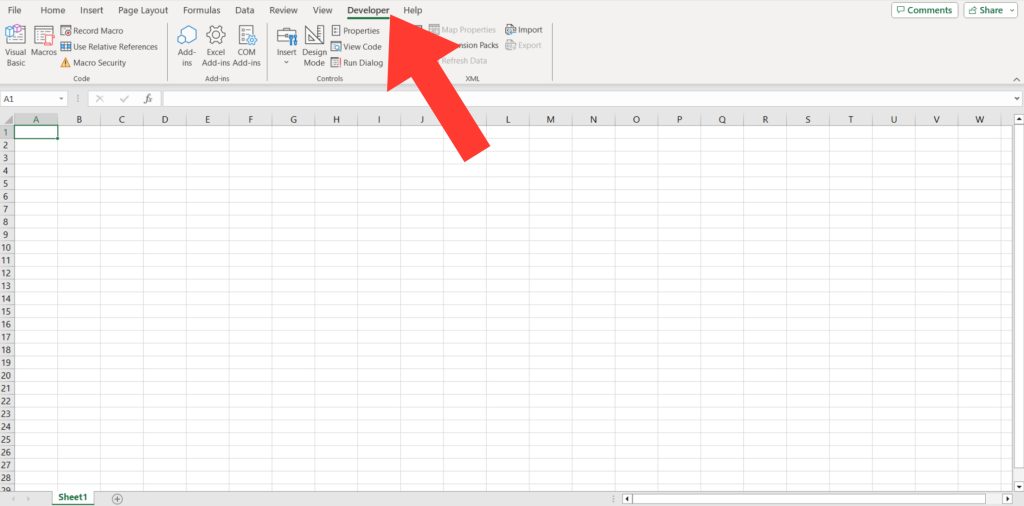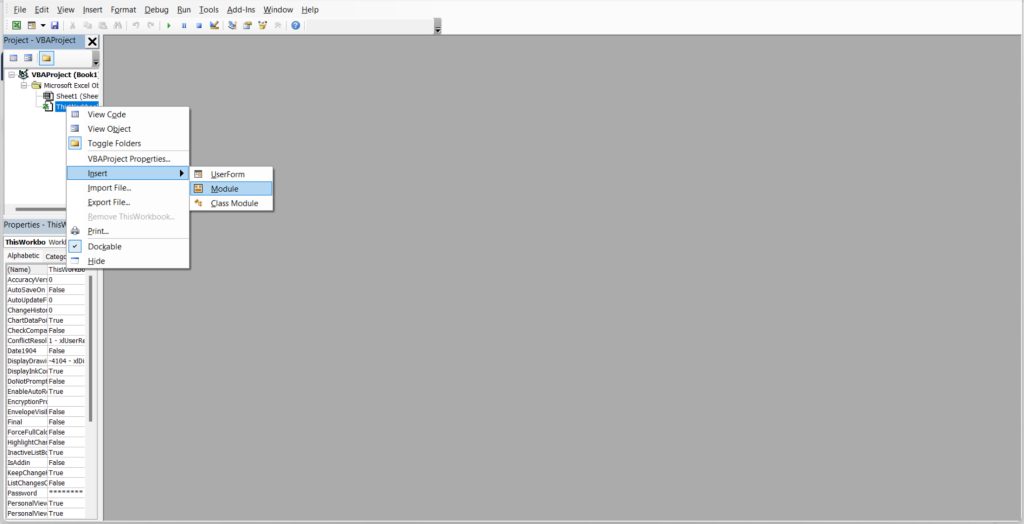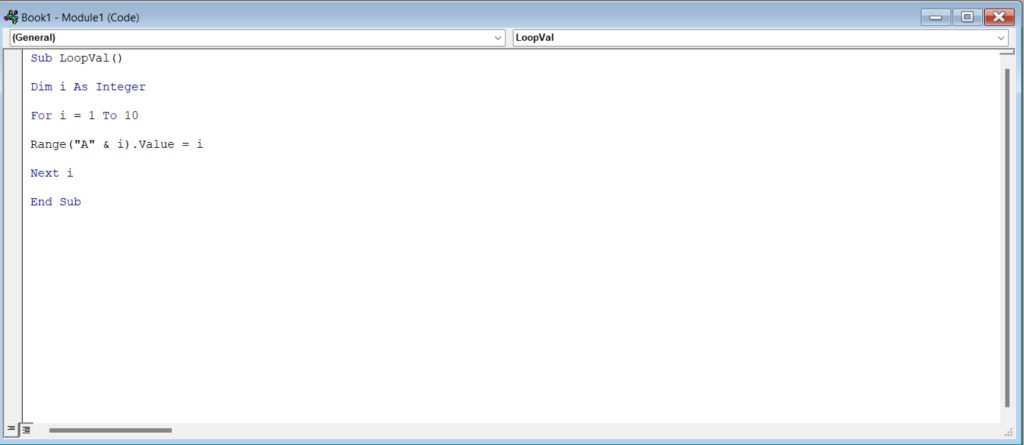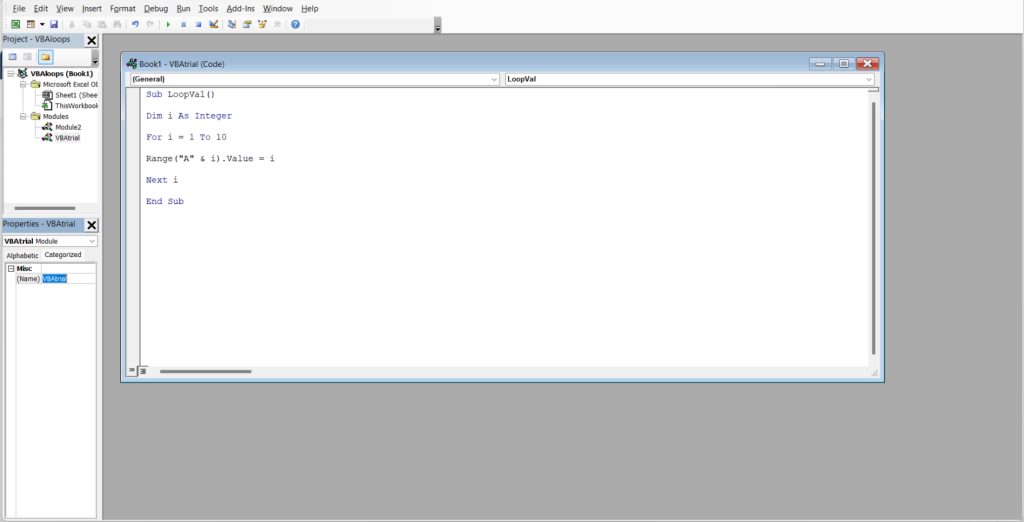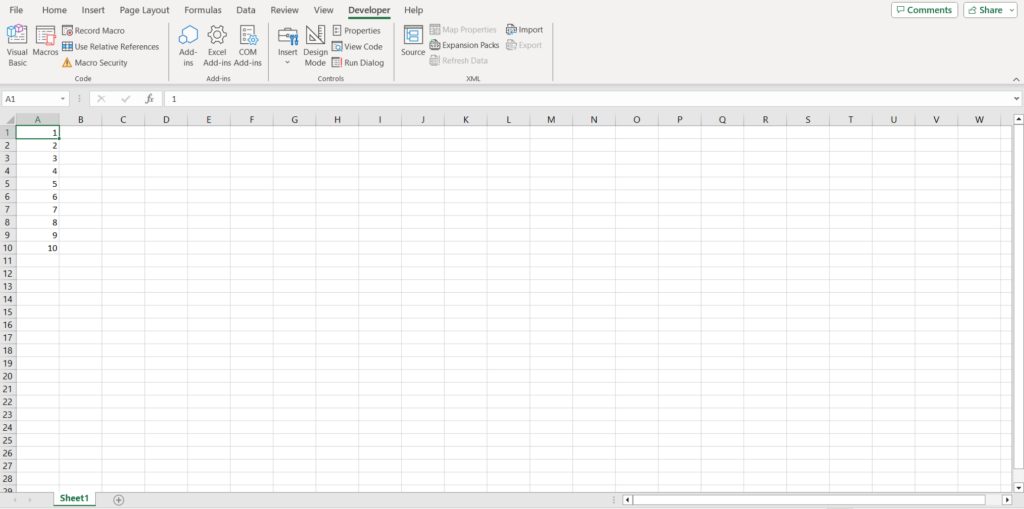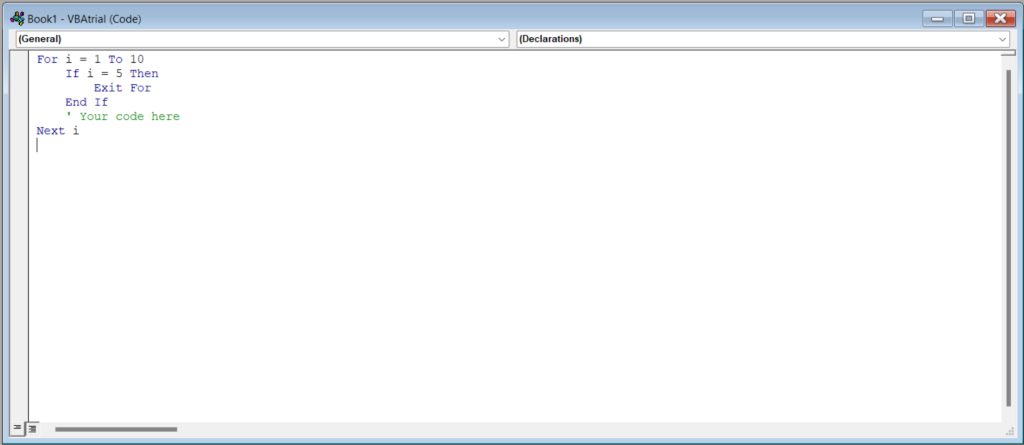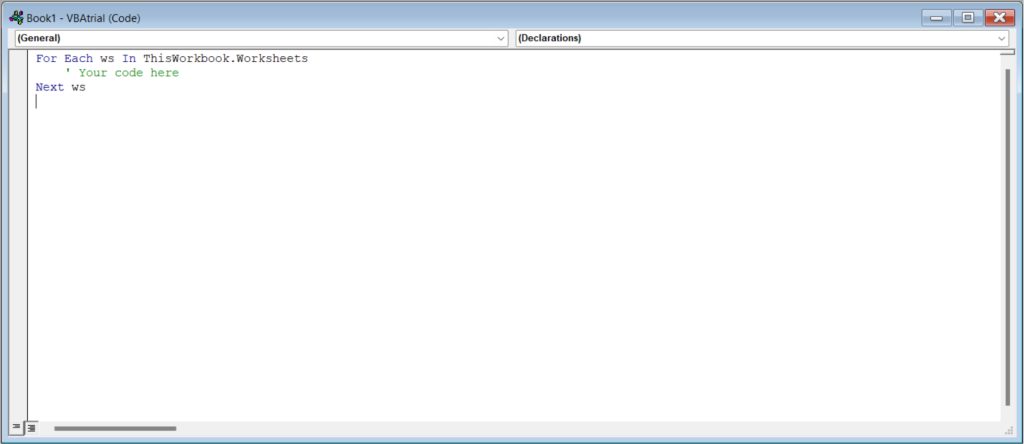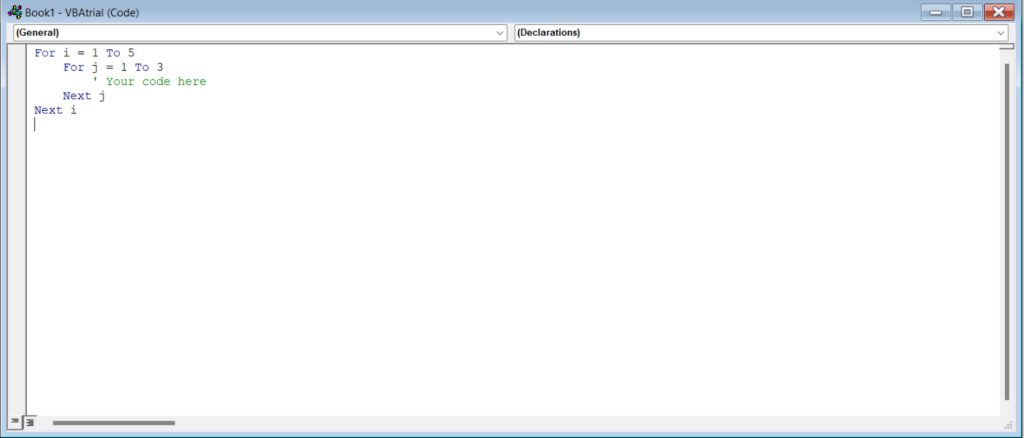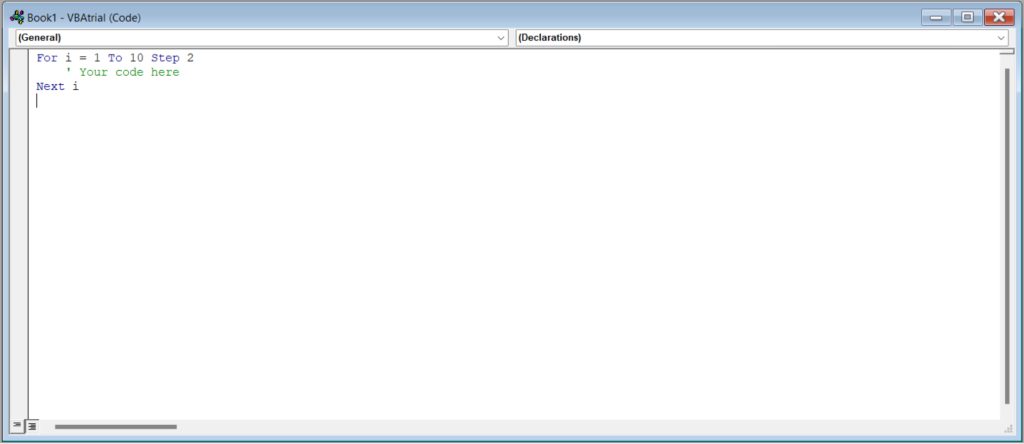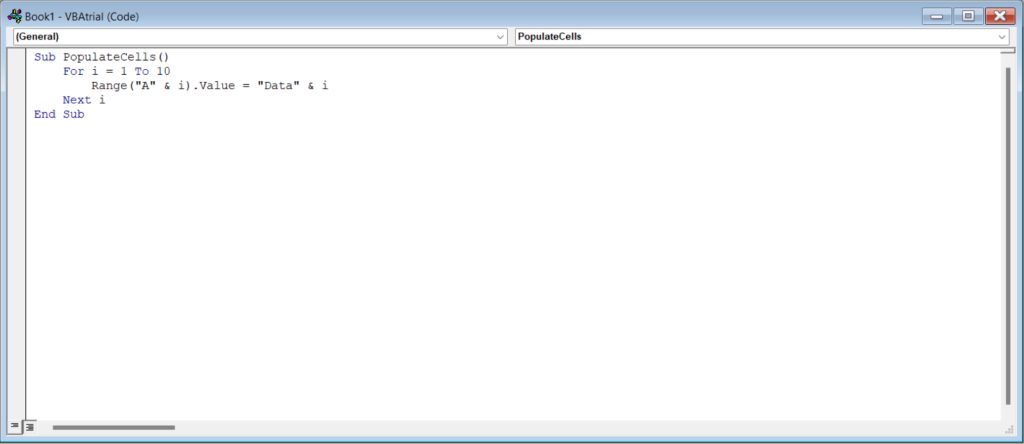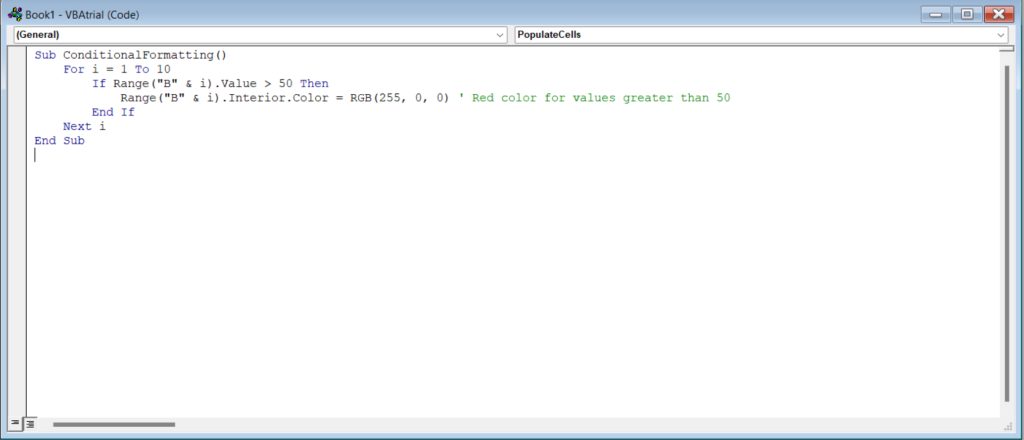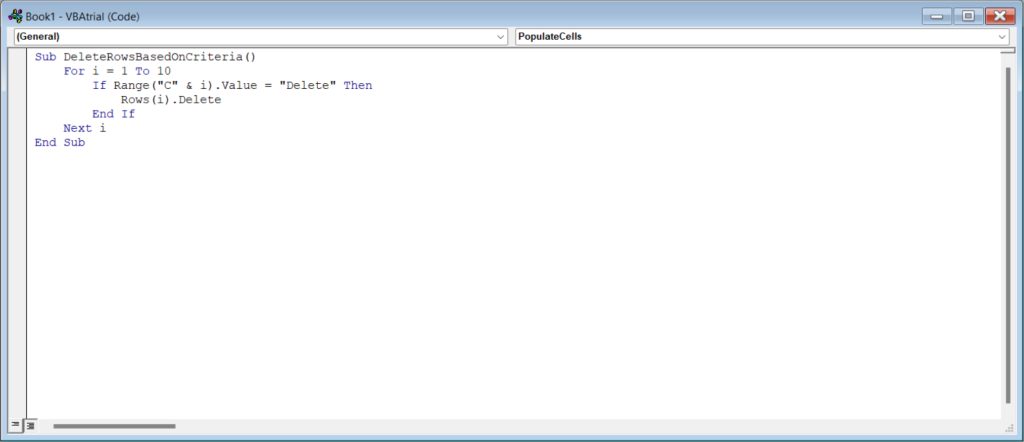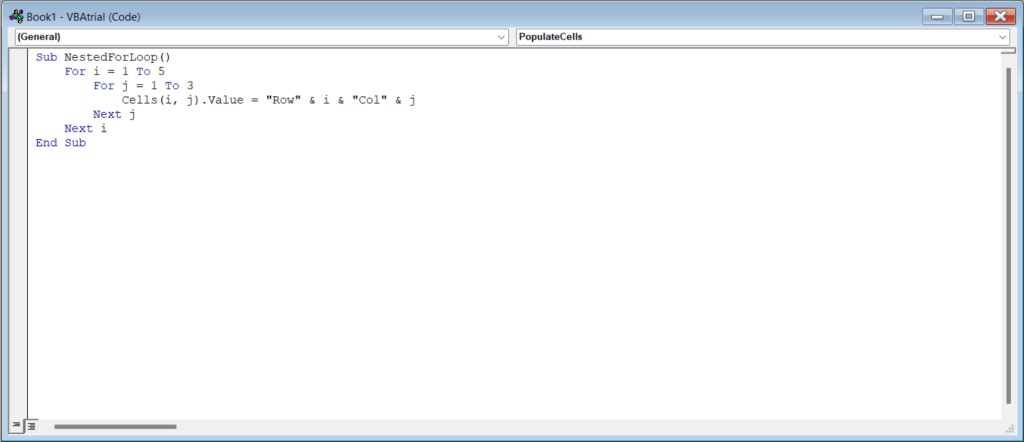What are VBA For Loops in Microsoft Excel?
Imagine VBA For Loops as the superhero of Excel programming – their mission? To make things happen over and over again, saving you from the tedium of repetitive tasks. These loops are like the magic wand that enhances the efficiency of your code. Instead of writing a bunch of specific instructions, you let the loop do the heavy lifting.
So, what’s the superpower? Flexibility! VBA For Loops allows you to repeat specific actions, like changing cell values, for a set number of times. But here’s where it gets even cooler – you can team up loops with other commands, such as For and If, to decide exactly when and how long your code should run. It’s like having a dynamic duo – loops and statements working together to create a symphony of automation in Excel.
What are VBA For Loops Used For?
Think of VBA For Loops as the engine that powers macros in Excel. They’re like a set of instructions that keep a program running smoothly as you navigate through your spreadsheet. While this concept isn’t unique to VBA and is commonly found in various programming languages, it’s like having a dependable assistant ensuring your script runs seamlessly from start to finish.
Let’s break it down with a practical example. Suppose you have a macro tasked with inserting values into cells in column A, starting from 1 and going up to 10. Enter the For Loop – a sophisticated command that systematically carries out this task. It’s akin to a well-trained assistant diligently placing values in each cell step by step. The beauty of it? The loop knows precisely when to wrap things up, gracefully concluding its operation when it reaches the designated number 10. It’s the kind of efficiency that makes your programming endeavors more manageable and structured.
While this is a basic example, Loops can perform nearly any action repeatedly, making them powerful tools for Excel automation.
In this article, we will cover the step-by-step guide on how to Master VBA For Loops in Excel –
Table of Contents
Let us look at each of these steps in detail.
How to Add VBA For Loops in Excel using the Visual Basic Editor
If you’re eager to dive into the world of VBA For Loops in Excel, the Visual Basic Editor is your go-to playground. Here’s a step-by-step guide to help you seamlessly integrate these loops into your Excel macros.
Step 1: Open the VBA Editor
Begin by unlocking the Visual Basic Editor. Press Alt + F11 on your keyboard (or Option + F11 on Mac). If you’ve already enabled the Developer tab, you can also go to Developer > Visual Basic to access the editor.
Step 2: Create a New VBA Module
With the VBA Editor in sight, it’s time to organize your code. Right-click your workbook in the tree menu on the left, and choose Insert > Module from the drop-down menu. Modules are handy compartments for your VBA magic.
Step 3: Insert Your VBA For Loop Code
A fresh window awaits your code. This is where you unleash the power of the For Loop. Let’s say you want sequential values in cells A1 to A20. Use this code:
Step 4: Rename Your Module and Test Your Code
To keep things tidy, rename your module. Select the module name in the tree menu, and type a new name in the Properties box. When ready, hit the Run Sub/User Form button to witness your macro in action.
Step 5: Save Your Workbook
Safety first! Save your masterpiece as a Macro-enabled workbook in XLSM format. Press Ctrl + S or go to File > Save As.
Step 6: Run Your VBA Code
Your VBA For Loop is primed and ready. Press Alt + F8 to open the Macro window. Select your macro (matching the Module name) from the list and press Run.
Things to Consider Before Using a VBA For Loop in Excel
A VBA For Loop is a versatile and broad-ranging method that allows your code to execute an action sequentially, stopping only when specific criteria are met. To guide you in creating such macros in Excel, consider the following pointers:
Exit For Statement
If you want to create a way for your For Loop to end before reaching the final value, add an Exit For statement to your code. This exits the loop and proceeds to the next line of code outside of the loop.
Complex Objects
VBA For Loops can cycle through not only a set number of numerical values but also more complex objects, such as workbooks in your spreadsheet, using a more intricate VBA For Each Loop.
Nested Loops
VBA For Loops can be nested with other logical statements, like If or Do While enabling integration of more complex decision-making into your code.
Step Value Modification
VBA For Loops iterate in a sequence, and by changing the Step value, you can adjust how much the loop counter increases during each iteration. Omitting a Step value results in the loop counter increasing in increments of 1.
Debug Mode Handling
If your VBA For Loop encounters issues or if your code has errors, VBA will enter debug mode with an error. You must troubleshoot your code using Excel’s built-in VBA Editor.
Known Limitations
Consider any known VBA limitations not explicitly listed here (e.g., lack of an undo function when using VBA).
Testing and Optimization
Before applying your macro on important spreadsheets, thoroughly test it on a backup file. Optimize your code for efficiency to prevent potential slowdowns in larger Excel files.
Common Examples of VBA For Loops in Excel
Here are a few common examples illustrating the application of VBA For Loops in Excel macros:
Example 1: Populating Cells with Values
This macro populates cells in column A with values “Data1” to “Data10.”
Example 2: Conditional Formatting Using For Loop
This macro applies conditional formatting to cells in column B, turning the background color to red for values greater than 50.
Example 3: Deleting Rows Based on Criteria
This macro deletes entire rows in the spreadsheet where column C has the value “Delete.”
Example 4: Nested For Loop for Table Manipulation
This macro utilizes nested For Loops to populate cells with values like “Row1Col1,” “Row1Col2,” etc., within a specified range.
Conclusion:
Understanding and leveraging VBA For Loops in Microsoft Excel can significantly enhance your ability to automate tasks, making your work more efficient and error-free. Whether you’re just starting out or a seasoned Excel pro, integrating VBA into your toolkit opens doors to automating tasks, refining workflows, and extracting richer insights from your data.
Start your journey by experimenting with straightforward macros, gradually progressing to more intricate projects. This gradual approach lets you tap into the complete potential of VBA for Excel, enabling you to accomplish tasks that would otherwise be impractical or time-intensive to handle manually. Happy coding!
Learn more about Macros with our 101 Excel Macros Examples!
John Michaloudis is a former accountant and finance analyst at General Electric, a Microsoft MVP since 2020, an Amazon #1 bestselling author of 4 Microsoft Excel books and teacher of Microsoft Excel & Office over at his flagship MyExcelOnline Academy Online Course.

